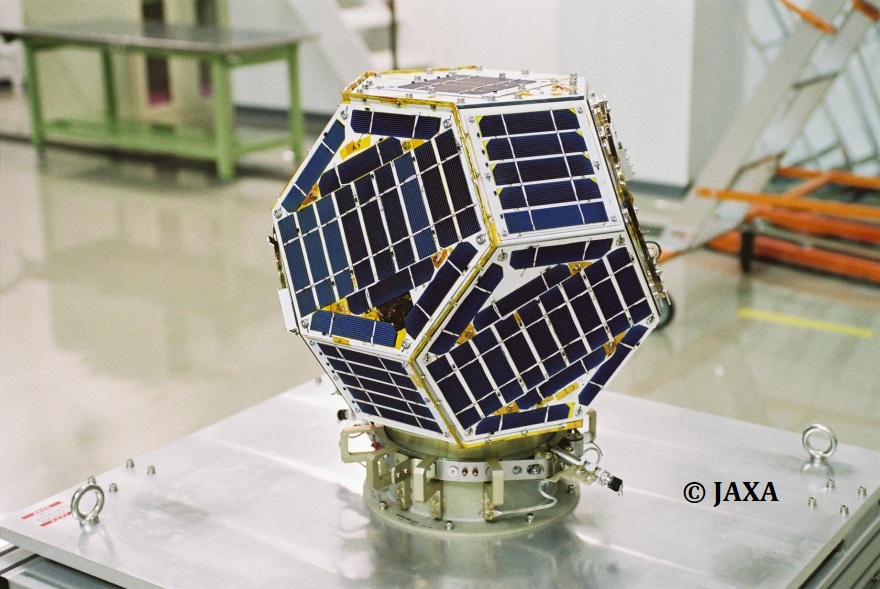Deep Space Communications Test Satellite Shin-En 2
Shin-En 2 is a 50cm class small spacecraft for the purpose of establishing deep space communication technology and developing ultra-lightweight satellite structure. It was released into deep space beyond the Moon as a secondary payload of the asteroid probe Hayabusa 2 launched on December 3, 2014.
I. Purpose
(1) Intercommunication between Earth and space agencies in the vicinity of the lunar orbit (about 380,000 km)
The objective of this project is to acquire basic technologies to realize lunar missions, such as technologies to insert a lunar exploration robot into lunar orbit and technologies to return lunar samples to the Moon.
For example, assuming that an exploration robot in the lunar orbit is to be operated, a schedule program is sent from the ground to be stored in the spacecraft when a predetermined distance is reached, and then the schedule is started and the operation is performed according to the schedule. And send the operation result back to the ground.
(2) ESTABLISH COMMUNICATION TECHNOLOGY WITH ULTRA-SMALL SPACECRAFT THAT REACHES DEEP SPACE OF ABOUT 3 MILLION KM
Applying the know-how of lunar reflection communication, we tried to confirm the operating state of the spacecraft in deep space.
Up to the vicinity of the lunar orbit, mutual communication is widely performed by amateur radio stations using spacecraft-mounted communication equipment (transponder type communication equipment) used for amateur radio services. Beyond space orbit, we conducted signal detection experiments as far as possible using telemetry data and Morse signals transmitted from spacecraft.
(3) Production of spacecraft using carbon fiber reinforced thermoreversible resin (CFRTP) and demonstration of space utilization
For the first time in the world, we used CFRTP, a carbon fiber reinforced thermoreversible resin that can weld and bond composite materials in the same way as welding metal materials. By using this CFRTP, the use of metal fasteners such as bolts and rivets can be dramatically reduced. This makes it possible to reduce the weight of the satellite and greatly improve the structural reliability.
In addition, we actively utilized the research results of “Hodoyoshi Satellite”. The structure of Shinen 2 uses CFRTP, and the resin used is PEEK.
(4) Measurement of the type and distribution of cosmic radiation in space from the Earth to the Moon via the Van Allen belt and beyond
Shin-En 2 is equipped with a sensor for measuring radiation in deep space. The radiation sensor was developed by NASA’s Johnson Space Center, Prairie View A&M University, and the University of Nevada.
The sensor is used to measure the type and distribution of cosmic radiation in space from the Earth to the Moon via the Van Allen belt and beyond.
II. General specifications
It has a quasi-spherical shape with a diameter of about 500 mm and is surrounded by solar cells. The experimental aircraft consists of a structural section, a thermal control section, a satellite control section, a communication section, a bus system for the power supply section, and a mission section.
Size: H465 x W500 x D500mm or less
Mass: Approximately
17.8kg Communication: 145MHz (reception), 457MHz (transmission)



Shinen 2 Project (Kagoshima University & Aichi University of Technology) Support Site
http://www.shin-en2.jp/index_E.html

